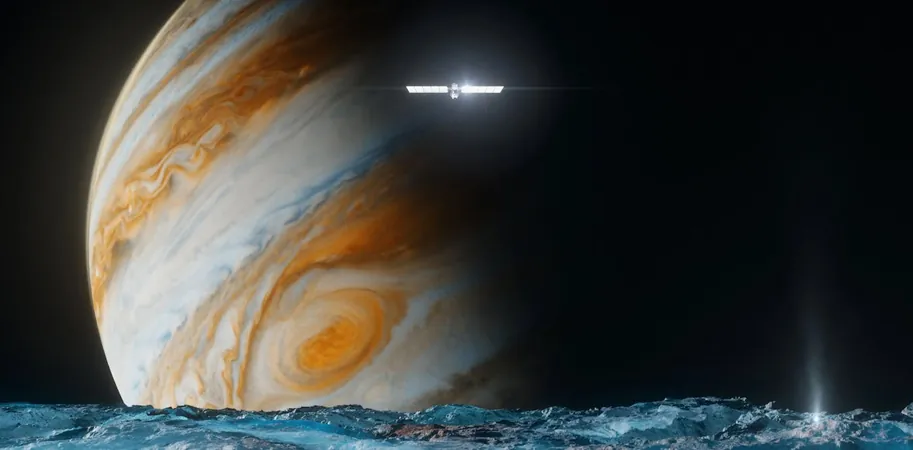
NASA's Groundbreaking Mission to Search for Life on Jupiter's Moon Europa Takes Off Soon!
2024-10-06
Author: Emily
On October 10, the excitement of space enthusiasts worldwide peaks as NASA is set to launch an extraordinary mission to Europa, Jupiter's fourth-largest moon, with the spacecraft named Europa Clipper. This mission is not only a monumental milestone in planetary exploration, but it also harbors the tantalizing potential of discovering extraterrestrial life.
A Giant Leap in Space Exploration
The Europa Clipper stands as NASA’s largest planetary exploration spacecraft yet. When fully deployed, its solar sails stretch across a space comparable to the width of a basketball court, and with an impressive mass of around 6,000 kilograms—akin to a large African elephant—this behemoth is ready to embark on a pioneering journey.
Why Europa? The Search for Life Beyond Earth
Traditionally, Mars has been the prime candidate in the quest for life outside Earth, with its location in the so-called "habitable zone" of our Solar System. But Mars is harsh, presenting a barren atmosphere and intense radiation that makes it unwelcoming. On the other hand, the icy moons of gas giants like Jupiter and Saturn are stirring greater interest due to one crucial ingredient for life: liquid water.
Indeed, deep beneath the surface of these icy bodies, scientists believe lie subsurface oceans, warmed by the gravitational tug of their massive planets. Europa, with its smooth and young surface indicating possible geological activity, presents a thrilling laboratory for examining the principles of habitability. Evidence points toward an ocean lying beneath its thick ice crust, potentially capable of nurturing life forms.
The Mission Ahead: What Can Europa Clipper Discover?
With the increasing radiation from Jupiter complicating direct exploration, the Europa Clipper will utilize a series of cutting-edge scientific instruments during its flybys of the moon. It will embark on a quest to identify habitable environments possibly concealed beneath the ice.
Among its innovative tools are: - A wide-angle camera designed to capture and analyze geological features and activity. - A thermal imager to map temperature variations, potentially revealing warmer regions that may harbor life. - A spectrometer capable of dissecting the chemical makeup of Europa’s surface and evaluating any water vapor plumes that may escape from the ocean beneath. - Advanced systems to measure the ice shell's thickness and the salinity of the ocean below.
One of the mission's highlights is the mass spectrometer, which will sift through the faint atmosphere for gases, offering clues to the conditions present in Europa's hidden depths.
Get Ready for a Long Wait!
Patience is key as this ground-breaking mission will take over five years to travel to Jupiter. While the Europa Clipper is primarily tasked with exploring potential signs of life, confirming actual life forms on this distant moon may require additional missions in the future.
This ambitious exploration not only brings us a step closer to understanding the possibility of life beyond our planet but ignites our curiosity about the vast mysteries that lie within our Solar System. Can you imagine what groundbreaking revelations await us in the icy oceans beneath Europa's surface? Get ready for an exhilarating adventure that just might reshape our understanding of life in the universe!









 Brasil (PT)
Brasil (PT)
 Canada (EN)
Canada (EN)
 Chile (ES)
Chile (ES)
 España (ES)
España (ES)
 France (FR)
France (FR)
 Hong Kong (EN)
Hong Kong (EN)
 Italia (IT)
Italia (IT)
 日本 (JA)
日本 (JA)
 Magyarország (HU)
Magyarország (HU)
 Norge (NO)
Norge (NO)
 Polska (PL)
Polska (PL)
 Schweiz (DE)
Schweiz (DE)
 Singapore (EN)
Singapore (EN)
 Sverige (SV)
Sverige (SV)
 Suomi (FI)
Suomi (FI)
 Türkiye (TR)
Türkiye (TR)